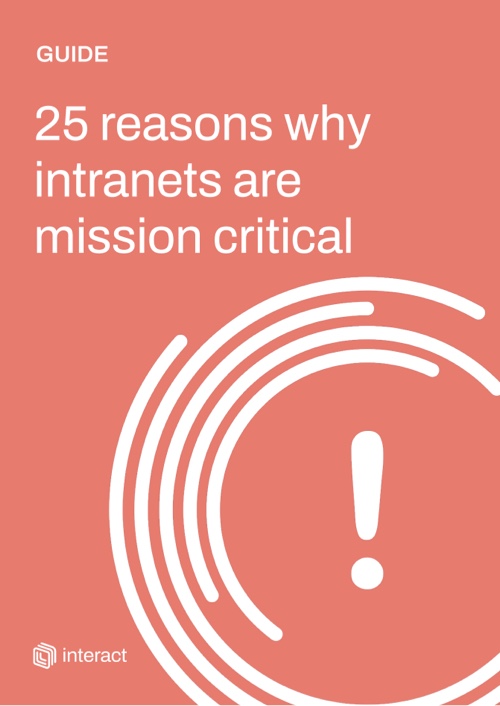Supporting employees after a trauma

Trauma is often unexpected and can cause a range of negative psychological responses. Even if the trauma is something that occurred outside the workplace, it’s likely to have an impact on both the individual at work and the business overall. How can you provide the right support?
Trauma – a deeply distressing or disturbing experience – can come under many different guises. Unfortunately, it’s an experience almost all of us will face at one point or another in our lives.
The way in which we respond to a traumatic incident or event is often a complex process, and even the same trauma can affect individuals in very different ways. A traumatic event may also impact not just those directly involved, but others around them too.
When trauma affects a member of our staff, this means it can have a ripple effect throughout an organization and present a variety of challenges for managers.
As an employer, we have a duty of care to our employees to ensure their health, safety, and wellbeing. In the context of trauma this means that even if the event or experience was something that happened outside of the workplace, we have a part to play in supporting our employees in managing and recovering after the fact.
Given that the way in which we respond and experience to trauma is individually unique, how can managers, HR, and even colleagues ensure the right support is offered?
23 ways your workplace can use a mission-critical intranet to achieve its objectives
Trauma – within, and outside the workplace
The term ‘trauma’ covers a broad range of experiences, and it’s important to note that not all individuals will recognize or respond to an incident as a trauma. It is more likely to have negative psychological impact if a person perceives the event to be something unexpected, that they weren’t prepared for, or over which they feel they have no control.
Traumatic incidents may occur directly within your workplace; occur externally and impact particular individuals from your organization; or may be a larger-scale external event that has the potential to cause widespread impact across your entire staff.

It can include events such as:
- Suicide or sudden death
- Murder
- Serious accident or injury
- Actual or threatened sexual, physical, emotional or domestic violence and abuse
- Harassment, bullying or intentional cruelty
- Robbery, vandalism or criminal damage of property
- Industrial or natural disasters
- Fire or damage
- Shootings, bombings, or terrorist activity
- Involvement or exposure to warfare
- Extreme isolation
- Organizational change such as downsizing and fear of unemployment
Many everyday stressors can escalate into trauma due to continued exposure; such as persistent noise, harsh or flashing lights, working amid construction or chaos, or extremes of hot or cold. Resilience to stress factors varies from one person to the next.
In some industries or organizations, employees may find the work itself a source of trauma. This is true for example of individuals working in critical care hospital units who may be repeatedly exposed to serious injury or death, or those working with victims of crime, violence, or trauma of their own.
Responses to a trauma
One of the greatest challenges posed by employers when looking to provide support after trauma is the diverse range of responses it can trigger in individuals.

Trauma may be experienced momentarily, or over a prolonged or short period of time. It may not be experienced immediately during or after an experience: one of the body’s natural responses to stress is dissociation, where an individual disconnects from what is happening as a way to cope. For some people, the trauma response may not kick in for hours, days, weeks – or in extreme cases, even months or years after the fact.
This is particularly common when traumatic events occur in childhood, when the individual may not be emotionally equipped to process what has happened to them. They may even be unaware that anything has happened, and later in life experience symptoms or recalls of memory and ‘flashbacks’.
Individuals who have an immediate stress reaction in the first few days may experience shivering, confusion, disorientation, tearfulness, feelings of helplessness, fear and anger, or even find themselves unable to speak.
Clinical observations of trauma show that over the four weeks after a traumatic incident, reactions then may include:
- Flashbacks or reliving the trauma
- Recurrent thoughts about the trauma
- Nightmares
- Problems sleeping and tiredness
- Loss of appetite
- Avoidance of places or things that remind the individual of the trauma
- Withdrawal or isolation
- Depression or anxiety
- Extremes of mood including mood swings, anger, grief, guilt, fear, disbelief and more
- Periods of denial, numbness, dissociation, feeling disconnected or as though the incident wasn’t real, was a dream, or happened to someone else
- Headaches, nausea, dizziness
- Difficulties concentrating or with memory and completing everyday tasks
This list isn’t exhaustive. Perhaps the most important takeaway for the employer is to recognize the uniqueness of how we respond: these symptoms are all natural responses to an atypical experience. For those undergoing the experience, understanding this is normal and will normally pass in time is perhaps one of the most powerful coping tools available.
As these responses translate into the workplace, managers may notice indicators such as increased anger or irritability leading to disputes, reduced work performance or output, indications of memory or concentration difficulties, requests for time off or persistent absences, or changes in personality and mood. Some individuals may revert to coping mechanisms such as increased use of alcohol or drugs.
23 ways your workplace can use a mission-critical intranet to achieve its objectives
The role and responsibility of the employer
It is important to recognize upfront that managers and HR are not – usually – clinical professionals and can’t stand in for appropriate specialist support where required. We must maintain professional boundaries and be aware of our limitations both as an organization, and as individuals.
However, both managers and HR personnel will be a primary contact for employees and have a responsibility to monitor and review situations impacting on staff health or wellbeing, to provide appropriate support, to manage individuals experiencing stress or trauma, and where appropriate, help them return to work.

Employers also need to ensure they meet their minimum legal requirements for paid or unpaid leave, such as bereavement leave or US Family Medical Leave. Policies differ from state to state and organization to organization; while minimal requirements set out a foundation, often the decision and requirement to take leave in the event of a trauma is a matter of employee-employer negotiation and should be assessed on a case-by-case basis.
While legal responsibility lies with the ‘employer’, line managers play a crucial role and may require support and guidance themselves on how to manage employees in light of a traumatic event. Where the employee’s needs exceed the capacity of the line manager, they should know where to signpost that individual for more support.
Providing support: early days
In the wake of an event or experience, there can be a pressure to step in and immediately action a plan for hands-on support, or rush to get counsellors onsite. Research shows this may actually be unhelpful for those involved.
Instead, early day support on behalf of the employer should take care of basic needs to allow individuals the space and freedom to begin processing events. The bigger help can come later.

Early day support includes:
- Acknowledging that an event has taken place, and that time and support to begin responding to that event will be needed
- Ensuring staff core needs are met including safety, medical attention and substance
- Establishing personal contact and ensuring that line of communication remains open
- Communicating options for time off, whether paid or unpaid, as appropriate
- Providing information on what reactions or symptoms staff may expect following a traumatic event, which can help them understand that what they’re going through is a natural response
- Signposting employees to appropriate external organizations, agencies or your Employee Assistance Program (EAP) if they need to seek support
At this point, experts advise that encouraging staff to talk about the incident is not necessary and may even be harmful to their ability to process and recover. It can take a while for individuals to grasp and begin working through what has happened.
Again, this is where flexibility and sensitivity to individual needs is needed. Offering employees the space and option to talk at their own pace if they want to, in an informal manner, is normally sufficient.
Respect an individuals’ wishes if they aren’t ready to talk. There is a delicate balance between re-traumatizing someone by forcing them to talk and helping someone process an event in a supportive manner.
If the trauma has impacted a single individual, it is entirely at their discretion whether to inform others. If the normal routine of the workplace or their role is going to be disrupted for a while, it may be necessary to give colleagues or those they’re working with some explanation, but this should only be at a top level and give no details. Respect an employee’s privacy and ask what, if anything, they would like others to know.
23 ways your workplace can use a mission-critical intranet to achieve its objectives
Work arrangements for those experiencing trauma
While paid or unpaid leave may be an option depending on the nature of the trauma experienced and your organizations’ policies, it’s also worth considering that time off isn’t the right course of action for everyone.
Put the option to your employee(s): some may need the time and distance to process, where others may find the routine and distraction of being at work helpful as a coping strategy.
Reasonable adjustments to an individual’s role and responsibilities may also be needed: relieving employees of high pressure or complex projects while they’re struggling with concentration or symptoms of trauma, for example. Some individuals may feel able to work but find the pressure of being around others too much; where feasible, flexibility around remote working may be a solution.

If an individual has taken time away from the workplace, conducting back-to-work transition meetings can help identify needs and ease the return for both individual and manager.
Ongoing support for employees
Research shows that the majority of people who suffer a trauma will begin to recover within four weeks with support from colleagues, family, and friends. Guidance suggests employers adopt a ‘watchful waiting’ approach during this initial period, continuing to communicate with employees and making reasonable adjustments where needed.
However, if symptoms continue or increase for more than four weeks, this can lead to a number of specific symptoms that may indicate post-traumatic stress disorder (PTSD). This is a psychiatric disorder requiring assessment by a medical professional to determine if the individual needs clinical treatment or intervention. If a manager suspects this may be the case for an employee, they should urge the individual to seek specialist support.
Even if symptoms don’t evolve into PTSD, a traumatic experience can remain with someone for a long time. Employers can provide long-term support in a number of ways;
- Signposting staff to relevant health, social, psychological and support services
- Provision of an Employee Assistance Program (EAP)
- Host information sessions or training with external speakers who can provide insight on the experience of trauma and coping strategies
- Ask employees affected by the trauma if they would like to hold an event to mark what has happened, such as a fundraiser or a moment of silence
- Maintaining open dialogue and offer support freely without referring too frequently to the event in question
- Educating staff on strategies for maintaining positive mental health and self-care, such as the benefits of exercise, diet, sleep hygiene and mindfulness
Trauma is a unique experience.
The most important takeaway for any manager or HR professional is that each individual experiences and responds to trauma differently.
Managing the process should also be conducted on a case-by-case basis, tailoring to the unique needs of those impacted. Ask employees what they need, rather than telling them what they need to do.
As organizations, we can prepare for the unexpected to a degree; establish procedures and policies about how to respond to incidents, for example, and conduct prompt assessments of employee needs when an event occurs. However, when trauma hits, it inevitably requires flexibility and empathy, with a focus on the individual.

